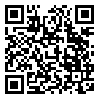Volume 11, Issue 43 (2014)
FSCT 2014, 11(43): 53-58 |
Back to browse issues page
Download citation:
BibTeX | RIS | EndNote | Medlars | ProCite | Reference Manager | RefWorks
Send citation to:



BibTeX | RIS | EndNote | Medlars | ProCite | Reference Manager | RefWorks
Send citation to:
The effect of mixed زuring on some of microbial index in camel meat
Marzban, B. 1, Ghaisari, H. R. 2 , Firouzi, R. 3. FSCT 2014; 11 (43) :53-58
URL: http://fsct.modares.ac.ir/article-7-1765-en.html
URL: http://fsct.modares.ac.ir/article-7-1765-en.html
Abstract: (3700 Views)
Camel meat has been considering as a common source of animal proteins in many countries such as Iran. Regarding to the continuous rise in human population, worldwide, the importance of meat and its products of food animals has been already realized. The economic impact of camel meat especially in Iran is enormous. Using different chemical preservatives in curing meat have previously employed to enhance its flavor and also to increase its shelf life. Meat curing is consisting of dry, wet and mixed methods. In previous studies it mentioned that the mixed method is more favorable than other methods. Therefore, in this study the effect of mixed curing method on some microbial index of camel meat was considered. Three meat samples were obtained and each meat sample was divided to two experimental groups: cured and none treated (as control groups). Then samples were monitored for different range of microorganisms such as; members of family Enterobacteriacae, yeasts and molds. The results were analyzed using statistical SAS software (version 9.1), Paired T test, one way ANOVA and Duncan. Our results showed that using mixed curing system on camel meat may significantly reduce the total number of yeasts and mold (p0/05), however changes in the total count and counting of bacteria in the family Enterobacteriacae, was not significant (p>0.05).
Received: 2012/04/27 | Accepted: 2012/12/28 | Published: 2014/06/22
| Rights and permissions | |
 |
This work is licensed under a Creative Commons Attribution-NonCommercial 4.0 International License. |





